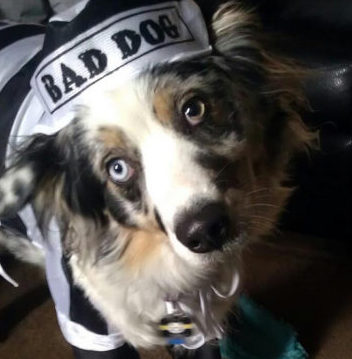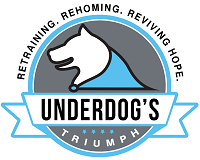
We all have things we’d like have our dogs not do. Maybe your dog goes full blown Rambo every time the doorbell rings, or maybe your pup loves to snarf things off your plate when your back is turned, or maybe you’d like to have a nice calm trot around the neighbor instead of having your arm pulled out of its socket over every leaf, twig or blade of grass that moves 🙂
When I ask folks,”What do you want me to teach your dog?” they almost always answer in the negative. They’ll say I want my dog to stop doing BLAH. Where that “blah” is any of the many annoying, if sometimes endearing, behaviors that drive most of us nuts. What I think a lot of people don’t realize is that this negative frame of mind, is exactly the wrong one to be in when training your dog.
Let’s use an example.
Client: “I’d like my lovely dog, Fido, to stop jumping on guests every time someone comes to visit.”
How can we teach Fido to stop jumping? The issue here is that if we stop one behavior another one will take it’s place. That’s a major problem, especially if we focus all our training solely on stopping an unwanted behavior. If I get Fido to no longer jump on people, and instead he now nips and bites at guest’s pants and shoes, have I succeeded in this training? I can bet you the Fido’s owners will give a sound NO to that question. Even though, technically, I did do exactly what they asked. I stopped Fido from jumping.
This is one of the major flaws in using punishment when doing dog training. If you only ever hit/jerk/shock the dog when they make a mistake how are they ever supposed to figure out what they’re supposed to do instead? And how can you be assured that your dog who used to only growl at strangers, won’t switch to biting strangers because you only taught him that “growling” resulted in punishment?
Whenever I hear a negative training request, I have to do some human to canine translation. I can’t just focus on what we want our dogs not to do, I need to think instead rephrase it as what we want them to do as an alternative behavior. For the example above, instead of jumping whenever a visitor comes, I’d like Fido to walk over and lay down on a mat until I release him to come say hi to my guests. That’s an alternative. Then we need to work teaching little Fido in small steps how to accomplish that specific alternative behavior vs leaving him to guess what it is we want him to do instead.
It’s kind of a fun way to think about problems in general. Let’s have you try your hand at it. Think of some alternative things you can train your dog to do for each of these unwanted behaviors below:
- I want Fido to stop taking food from my plate.
- I want Fido to stop pulling on the leash.
- I want Fido to quit barking at the UPS truck (Esther’s arch-nemesis)
How did you do? Everyone’s ideal alternative would be slightly different so it’s very important to decide as a family what exactly you’d like to do instead. Dogs need both consistency and patience on our parts to be success, and framing our tasks as teach alternative behaviors is the first step!
